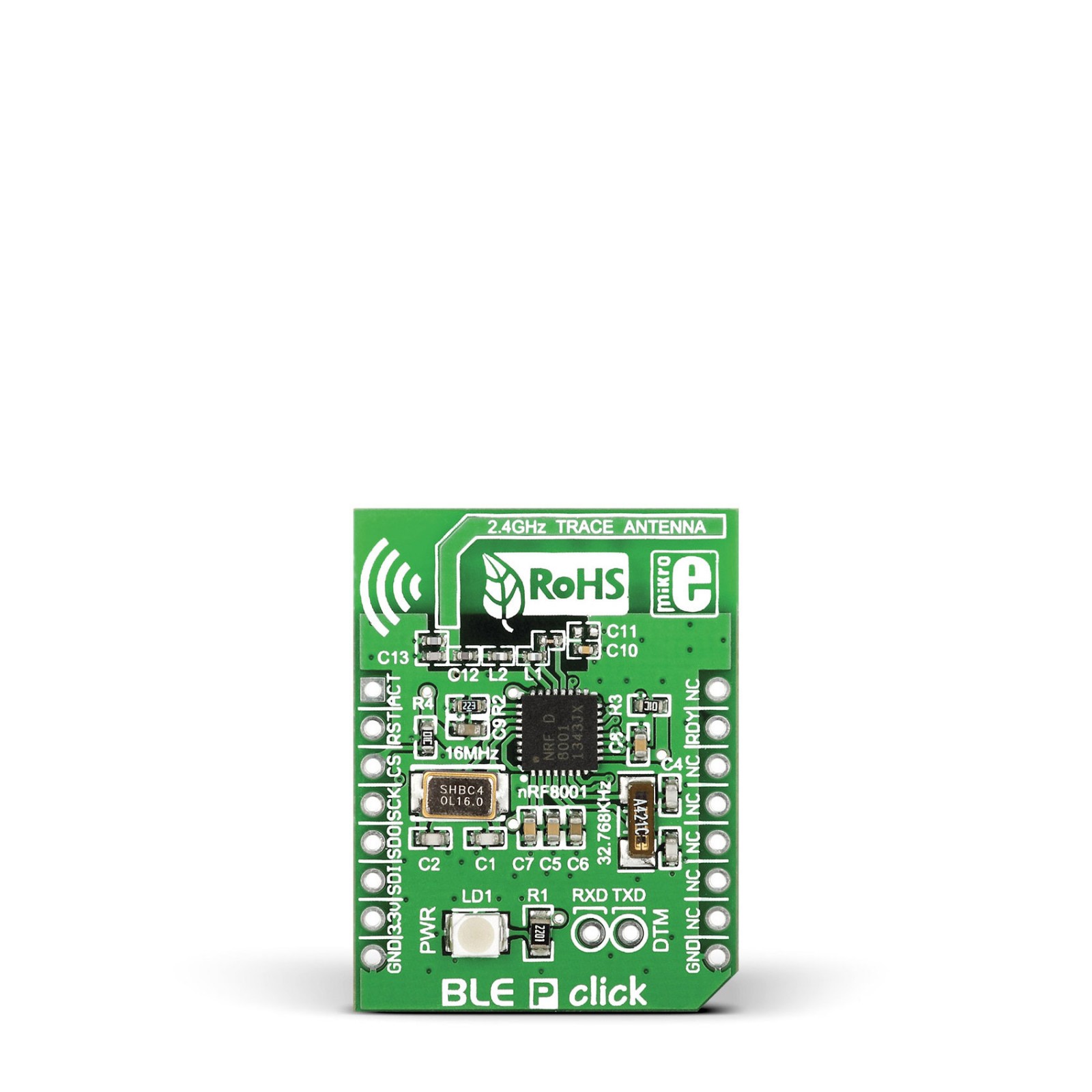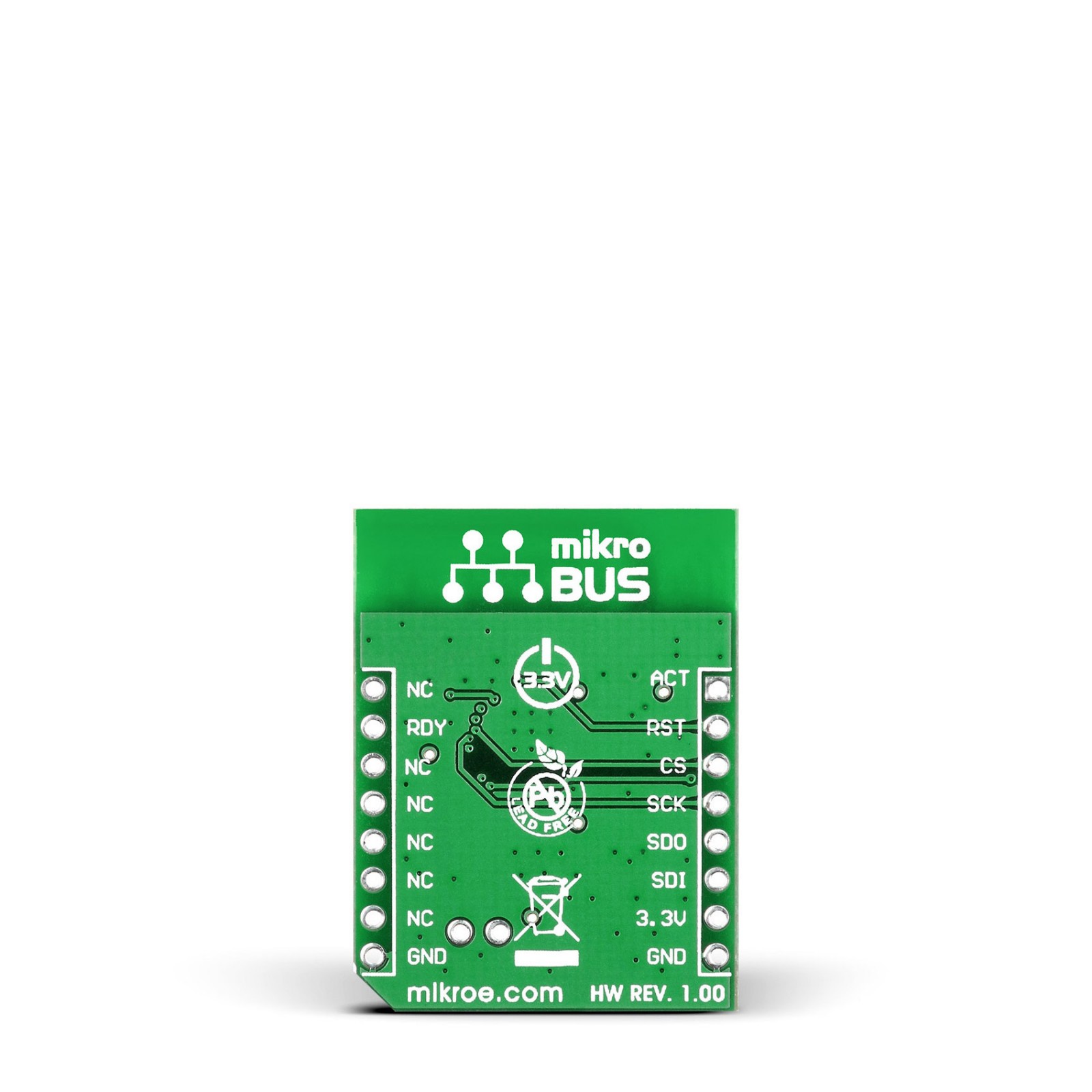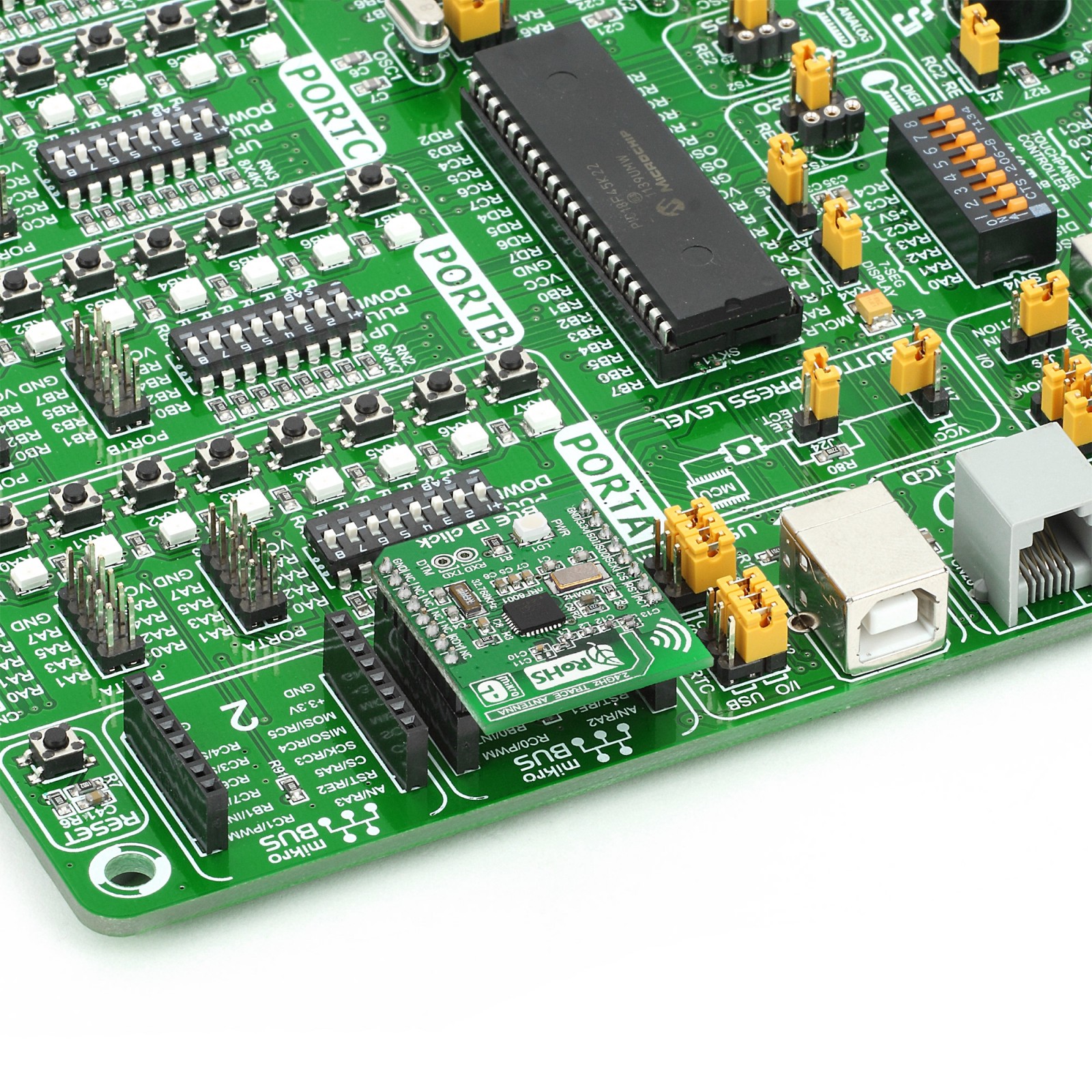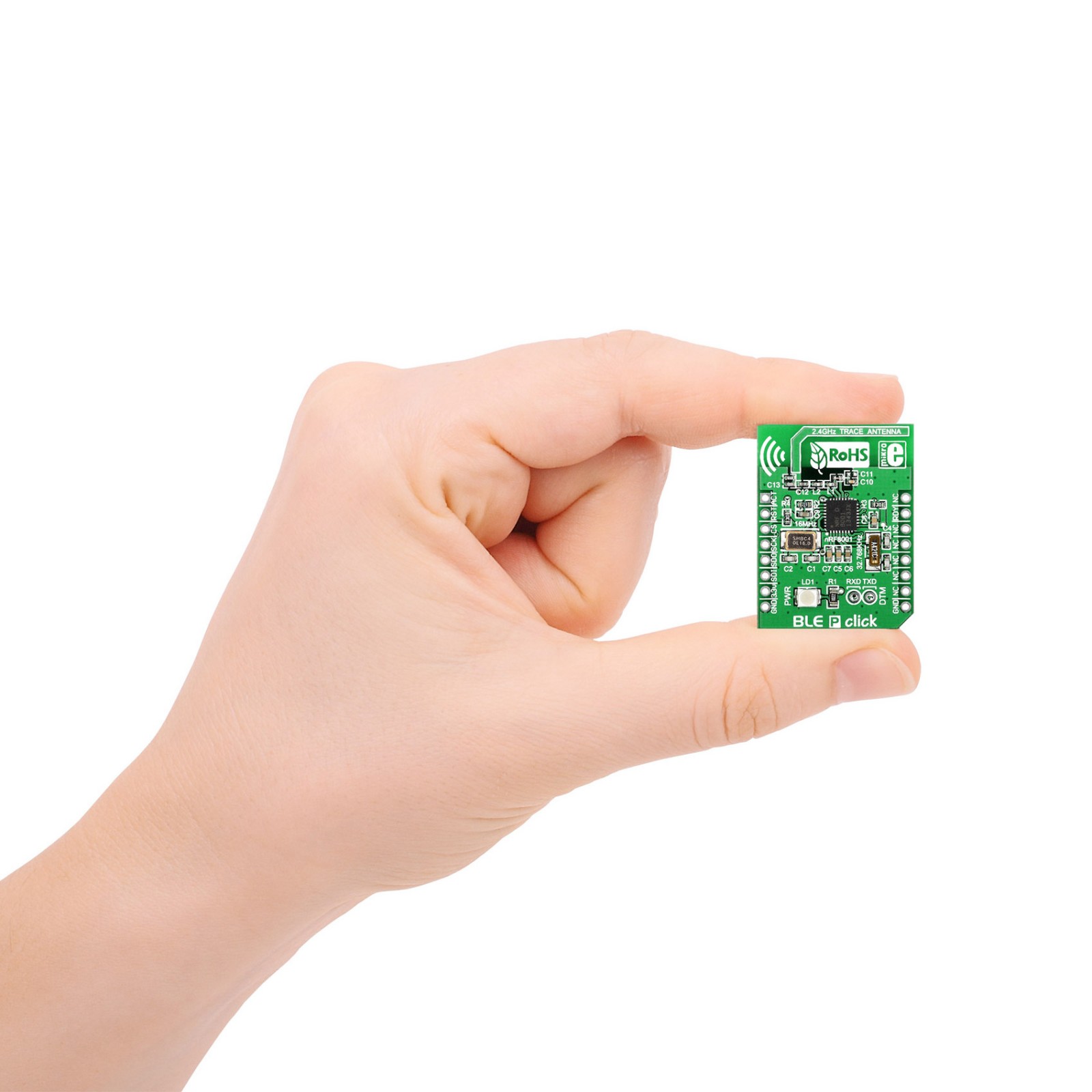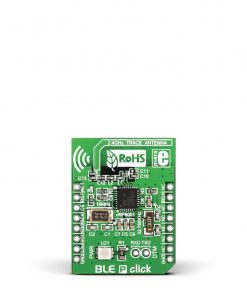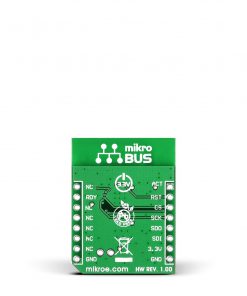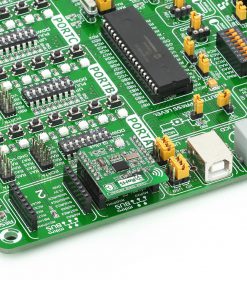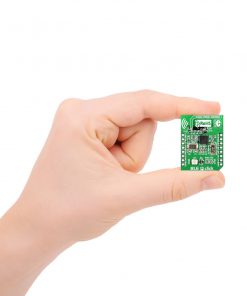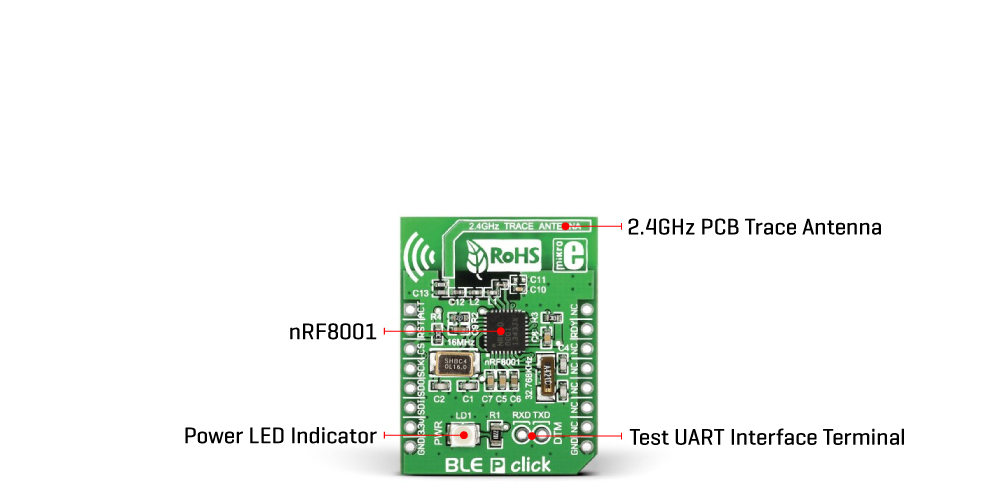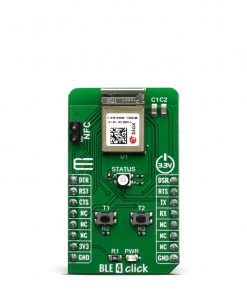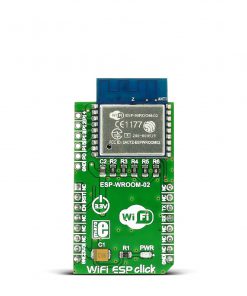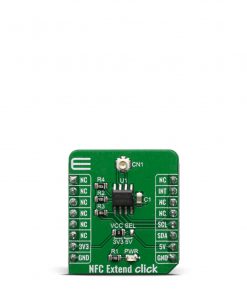Subtotal: R2,380.00
BLE P Click
R560.00 ex. VAT
BLE P Click is a compact add-on board with a low-energy Bluetooth transceiver designed for operation in the peripheral role. This board features the nRF8001, a Bluetooth 4.0 transceiver from Nordic Semiconductor. The nRF8001 combines Radio, Link Layer, and Host into a single product with built-in stack features such as low-energy PHY layer, link layer slave, low-energy host, and more. It also has a PCB trace antenna designed for the 2400-2483.5 MHz frequency band that allows a maximum range of 40 meters in open space. This Click board™ is suitable for general data transmission applications such as thermometers, blood pressure monitors, weight scales, toys, pet supplies, IoT sensor nodes, and more.
BLE P Click is supported by a mikroSDK compliant library, which includes functions that simplify software development. This Click board™ comes as a fully tested product, ready to be used on a system equipped with the mikroBUS™ socket.
Stock: Lead-time applicable.
| 5+ | R532.00 |
| 10+ | R504.00 |
| 15+ | R476.00 |
| 20+ | R458.08 |

 RN4678 Click
RN4678 Click  ccRF2 Click
ccRF2 Click  IrThermo Click 3.3V
IrThermo Click 3.3V 